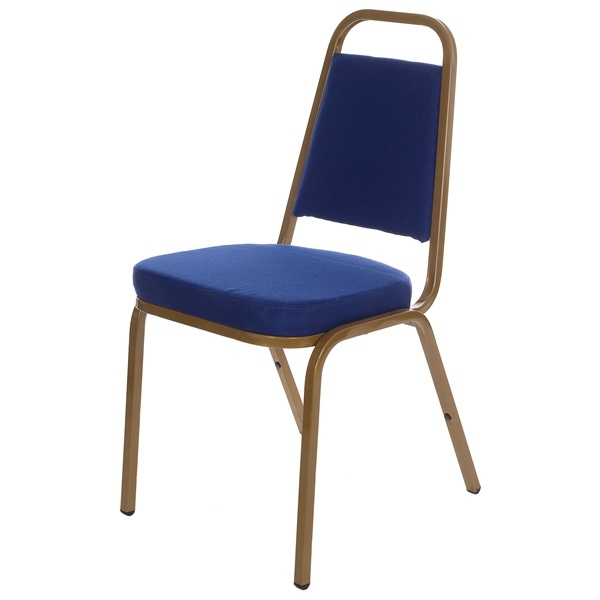
| Volume 34 #5 | March/April 2018 | |
 |
Where is the year going? It seems that New Year's was just last week, and now here we are one sixth of the way through 2018! Well, I must be having fun, because time is surely flying.
And I am having fun. Besides all the classes we have available to us, we just held our first-ever Groundhog Day Dance. Drawing its theme from the movie by the same name, we played with the idea of making the second half of the program a repetition of the first half. Several dancers commented afterwards how much they appreciated getting a chance to repeat a dance that they hadn't done so well the first time they did it. Other feedback included appreciation for the program -- all of the dances were favorites -- and getting to dance such favorites more than once in the evening. Kudos to Tom Halpenny for generating the concept and chairing the dance!
In addition to the monthly dances Across the River, and the Burns Dance in Eugene in January, and the Portland Ball in March, we have coming up our own Annual Dinner Dance on April 21st -- if you haven't signed up, yet, be sure to do it soon. Here, let me help you! (For those reading this in paper form, contact Susan Shaw, Registrar, PO Box 2438, Battle Ground, WA 98604, for registration details.)
With so many opportunities in the offing for dancing with friends near and far... it just makes me want to do the happy dance!
Oh yes -- Happy Dancing!
In my years in SCD, one of the more interesting and enjoyable elements of this activity is the contacts made and ties made across the years and across the miles. A number of years ago now, Chandi McCracken was attending college out here at Portland State University and she became part of the dance community when the Portland Branch was using the Tigard Grange for their dance venue. She has since moved back to Minnesota where she's from and has established a career and is married now. We've kept in contact through the years she remembers her friends she made out here.
About a week or two ago, both she and her father Andrew remembered that I was a Gàidhlig learner and speaker and knew that I continued to have an interest in Gàidhlig music. Recently, the Gàidlig Supergroup Dàimh had played out in the Minneapolis area and they so enjoyed it that they looked up the band's itinerary and noticed that they would be coming to the Portland area and would be playing at the Alladin Theater.
Though I knew of Dàimh, I'd not really listened to them or had any recorded music from them. However, I picked up tickets, and as I do when I can, I threw out invitations to come to other dancers in the area to come and enjoy this with us. Most of them were busy this time around, however, we were surprised to see Louise, one of the new Vancouver area dancers and she decided to hang out with us even though she had spent money for the more pricey "gold circle" seats closer to the stage.
We each enjoyed ourselves thoroughly and I had the opportunity to twice go to the "merch table" and using my schoolhouse Gàidhlig, purchase a CD and then what the group jokingly called a dishtowel but was really a flag with the band logo on it but which came along with a download of another album from the Bandcamp service. That along with dinner at Thai Touch, a restaurant recommended by another SCD friend we all know, Cynthia Soohoo, completed the evening.
The first ever Groundhog Day Scottish dance on February 3, 2018 entertained two-plus sets with energetic music by the Soohoo-Hui family. Here is a recap since the initial newsletter item. http://www.rscds-swws.org/news/stories/groundhog-day-dance.htm
The typical Scottish dance program has twelve dances. The Groundhog Day dance has six dances in the first half, and we repeat the same six dances in the second half. These are six of the best Scottish dances which would be really fun to dance a second time. I had imagined the idea about three years ago, after some of us Scottish dance friends had viewed the Groundhog Day movie a few times, in which TV weatherman Phil Connors relives Groundhog Day over and over and over. Each repetition plays out slightly differently, as Connors learns from earlier cycles. The similarities and subtle differences of each repetition make for a humorous blend of wit, charm, and personal growth. Comparing the roles in the Groundhog Day dance with the movie, the dancers play the Phil Connors role, while the emcee, briefers, and musicians play the rest of the world.
The program was designed for the second half to repeat the first half as closely as possible. Each half began with the clock radio segment from the movie. http://www.rscds-swws.org/news/stories/groundhog-day-radio.mp3 The intermission played the Pennsylvania Polka from the movie. http://www.rscds-swws.org/news/stories/pennsylvania-polka.mp3
The following emcee script was recited during the first half AND the second half.
First dance: Welcome everyone to the Groundhog Day Scottish dance! Groundhog Day is midway between the Winter Solstice and the Spring Equinox. Punxsutawney Phil will prognosticate when spring is coming. Let's get the dance started. I would like to introduce our first dance briefer, Liza Mae!
Second dance: I would like to introduce our excellent musicians! The Soohoo-Hui family. Band leader Cynthia, Lilyana, Elisabeth, Nathaniel. The Soohoo-Hui family!
Third dance: Punxsutawney Phil is here this evening to give us his prediction. (Rouse, hoist to scan the room for shadows and listen to groundhog.) This February 2nd at 7:20 and 30 seconds ... Punxsutawney Phil, the seer of seers... prognosticator of prognosticators... emerged reluctantly, but alertly... and stated in Groundhogese... "I definitely see a shadow." Sorry, folks. Six more weeks of winter.
Fourth dance: This is the 132nd Groundhog Day since the first one in 1887. Phil lives with his wife between Groundhog Days. Who knows her name? Phyllis.
Dance briefers Liza Halpenny and Linda Mae Dennis merged their personalities into alter ego "Liza Mae". Liza briefed the first half and Linda Mae briefed the second half by introducing modified dance names that we can read from the program poster.
The dance finished with a Branch favorite "Oslo Waltz"; the band specially prepared the music we like to sing along with. Cynthia Soohoo remarked that she appreciated the opportunity to collaborate with her family on the fun and challenging music project.
The format tests a theory that we can have just as much fun dancing a shorter program and repeating dances. A typical Scottish ceilidh depends on this principle. Dancers learn a small set of well-known dances and the dances are often repeated during the evening. Dancers become more confident as they practice the dances. Ceilidh dancers are less concerned about remembering the figures and are more focused on having fun, compared with a typical Scottish country dance program. We can extend the concept to Scottish dance classes. Classes I have attended spend a lot of time teaching a dance, followed by dancing the dance only once before moving on to teach a new dance. Dancers would learn a dance better with more practice, and become more confident, if the dance were repeated later in the class or during the following class.
Many thanks to folks for their efforts to put on the Groundhog Day dance. Musicians: Cynthia, Lilyana, Elisabeth, Nathaniel; Briefers: Linda Mae and Liza; Sound: Patrick Hogan; Door: Susan Shaw; Setup food table: Liza; Emcee: Tom; Decorations (movie quotes): Susan + John; and you dancers for coming!
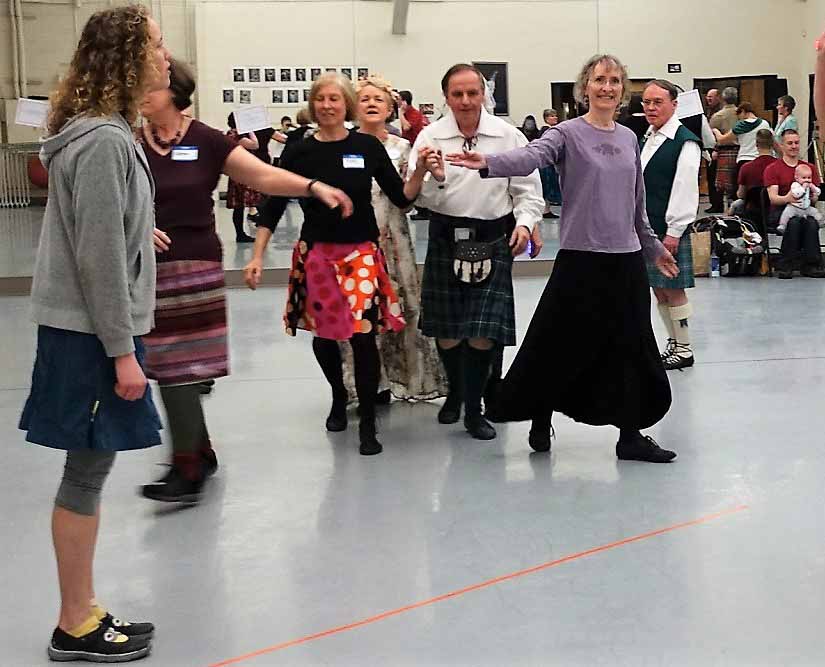
|
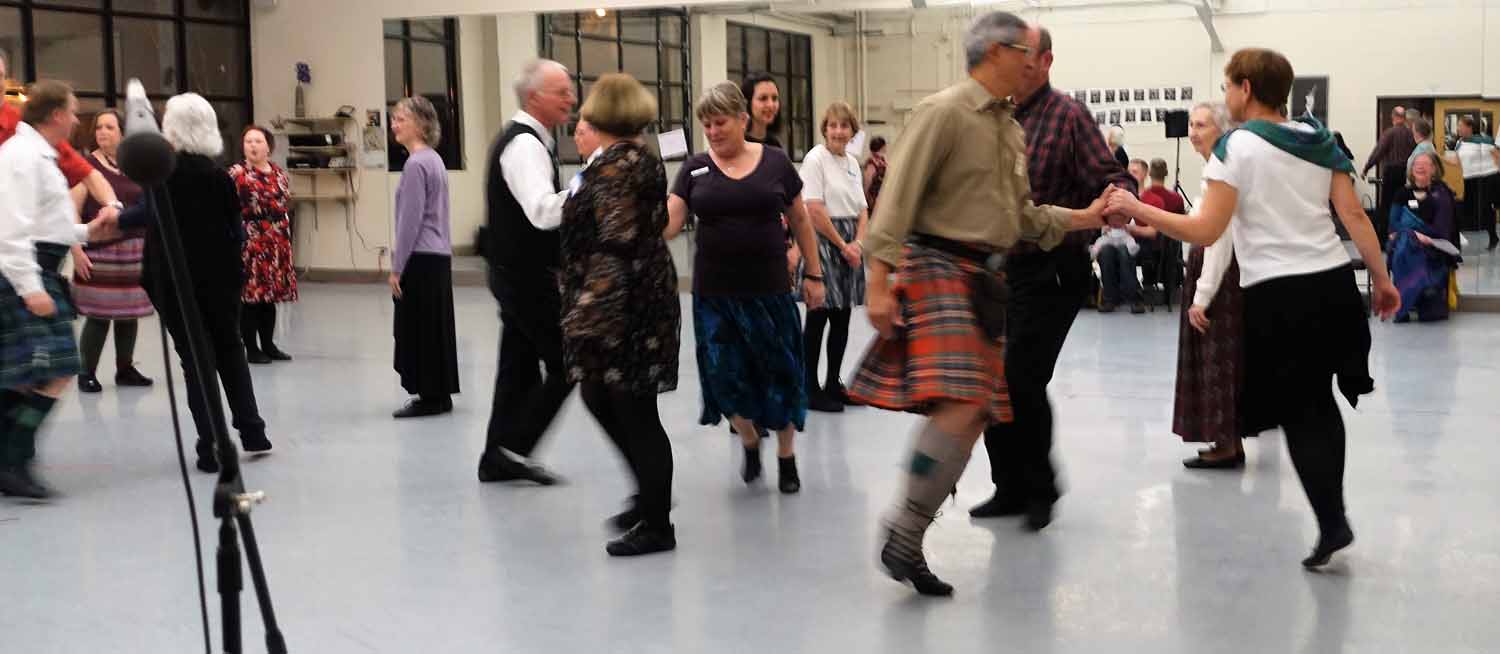
|
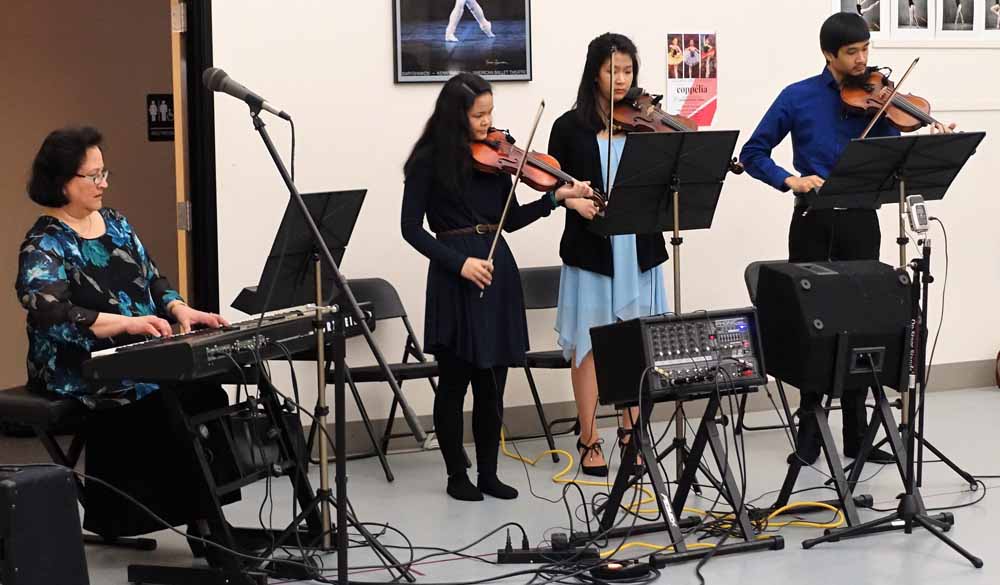
|
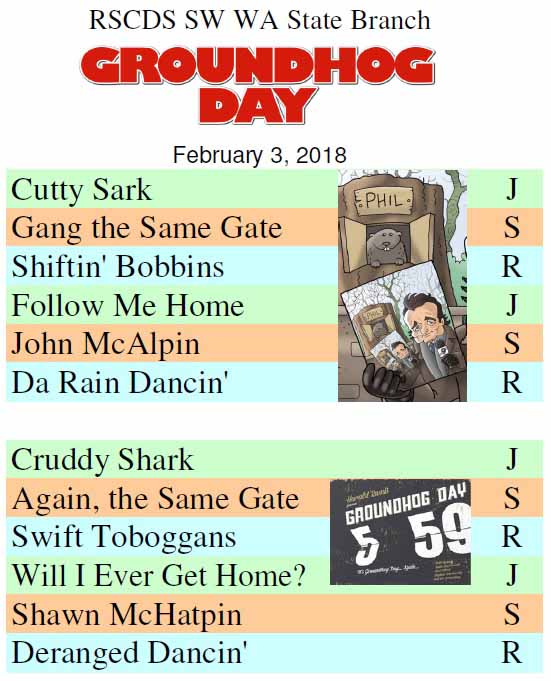
|
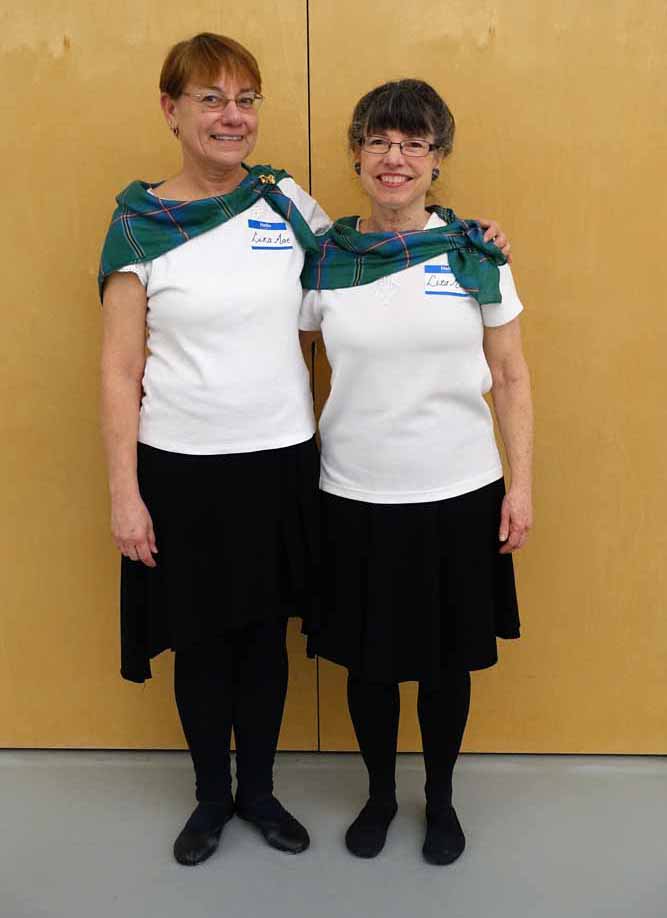
|
Antarctica is different from the other continents – it is the highest, coldest, windiest, last-discovered, least-explored, and the only continent without a permanent human population. It is also the only continent without an RSCDS Branch. This is the story of my small attempt to bring the joys of Scottish Country Dancing to the Seventh Continent.
Much of my career as a geologist has been spent in the polar regions; as a Scot, I became interested in the most important Antarctic expedition you’ve never heard of – the Scottish National Antarctic Expedition (SNAE; 1902-1904), led by William Spiers Bruce (1867-1921), the most experienced British polar scientist of his day. Bruce’s expedition in the Scotia was the first Antarctic expedition with science as its main aim and established the first permanent Antarctic base.
They also had a piper. Gilbert Kerr played himself into immortality when he was photographed in full Highland gear playing a medley of tunes to a bemused emperor penguin on the ice of the Weddell Sea. You can just see a shadow on the snow in the photo which marks the hidden string which attached the Penguin to the Piper’s ankle. In 2002, Roy Goldring wrote the Scotia Suite of dances to commemorate the SNAE Centenary. One of the most popular is The Piper and the Penguin (The Piper and the Penguin) – an 88 bar reel for four couples in a square set. Muriel Johnstone composed the music for the Suite; she told me recently that the distinctive tune for The Piper and the Penguin was inspired by watching penguin videos and her musical aim was to capture the perkiness of their movements. She succeeded.
 |
In 2017, partial retirement and an unmissable opportunity took me back to the Antarctic as an Expedition Guide for Albatros Expeditions on MV Ocean Atlantic. The distance to Antarctica means that there is a lot of sea time, so expedition staff is always looking for opportunities to keep guests entertained and informed. I offered guests and staff the chance to learn The Piper and the Penguin, choosing this dance for several reasons: the Antarctic connection, the strong story behind the dance, and, crucially, that it is all done in travelling step. As a non-teacher whose own pas de basque is a bit shaky, I thought that setting would be a step too far. The Piper and the Penguin is also symmetrical which makes memorising it easier.
The next day I cleared the bistro, put on some music and prayed that seven people would turn up so we could have a set. Forty people arrived and 30 stayed the course over the next few days. No-one had done any Scottish dancing and more than half were Chinese guests who did not speak English, so I relied heavily on my Mandarin translator, the incomparable Jenny Zhou. We used a YouTube video of The Piper and the Penguin danced at the Moscow Ball as training material, walked the geometry of the dance and then did step practice. I had them doing skip change in a long snake around the room – four long, four short repeated. I intended to do 16 bars, but I was called out for a quick chat with the Expedition Leader, did not turn off the music, and returned to find a rather tired snake which had just done 88 bars without stopping. It did get the message across.
Finally, the great day came – we crossed the Antarctic Circle on a cold, misty morning with snow and icebergs. We arranged three sets on the carpeted afterdeck which was wet but not slippery, the speakers were set up on the only wall of our open ballroom, video cameras were positioned, we got a chord from our electronic Colin Dewar, and we were off. It went well and we did it again with people swapping in. I was proud of my pupils, who covered nicely, smiled, did not look at the deck, and had fun. Footwork was a bit clumpy, but we were wearing outdoor shoes and the only serious mistake was me making a spirited attempt to leave out four bars. A lesson not to worry so much about others and watch my own performance. I danced in my kilt and a short-sleeved shirt, which made the Chinese guests think I was a bit of a hard man – they all wanted a picture with me; 20 minutes later I got inside in a state of borderline hypothermia.
 |
We had a bonus a few hours later when Ocean Atlantic reached Detaille Island, the site of an abandoned British base. Sadly, we had to dance in nine inches of soft snow in wellies. We discovered that we had forgotten the speakers, so used an iPhone on a rucksack between the two sets. This could be heard by two people who called the time – when the editor overlaid the music it showed we did pretty well, apart from a disagreement in one set about who was top couple – always important to communicate in advance!
This was not the first time that The Piper and the Penguin was performed in Antarctica – that honour goes to Barbara Sharp of Leicester Branch who organised two sets on Beak Island in 2009 (Scottish Country Dancer, Issue 8), but we think we were first south of the Circle. What did I learn? First, teaching is hard – so be gentle with your guides in this strange world we inhabit. Second, people with no background can quite quickly master a complex dance and, importantly, have fun. Third, there was a huge appetite for Scottish Country Dancing among the Chinese – can we start a Beijing Branch? Fourth, if you scratch the surface of the diverse inhabitants of a cruise ship, there is a well of talent: videographers (Ted Creek, Dominik Kaeser, Eric Palo Jacobsen, Emil Maltha Rasmussen); film editors (Dominik Kaeser); and organisers (Marylou Blakeslee). Thanks to all of them, to Isobel Mcmillan for the initial encouragement and support, and to Stan Grycuk for final editing. The video of the dancing is available on YouTube: https://www.youtube.com/watch?v=XxuWaiVywls
David asked that the ship's freelance photographer should be acknowledged for taking the two group photos aboard ship.
This last February, a journey to King of Prussia, PA was mandated by my company and as I'm wont to do, I scoped out my destination and looked for dancing opportunities at or near the destination.
I discovered that there was a class to the east of King of Prussia in Chestnut Hills run by Geoffrey Selling who some of you may know is an adjudicator for folks who are aspiring to become Scottish Country Dance Teachers.
I also learned that transportation wasn't going to be easy as the class location was about a half hour away. However, Scottish ingenuity and thriftiness being what it is, research was begun into other means of transport and were looked into and it was decided to use Über instead of a local taxi service as the rates were cheaper and I was able to use this to argue for compensation from the company because I spent very little of their money for meals, etc.
When I travel, especially when I'm spending time with folks who serve me either by transportation or some other means, I like to have a conversation and learn something. This I did with the two Über drivers.
Kenneth, the first Über driver took me out to Chestnut Hill. He drives full time and is going back to college to obtain a degree in home care administration because his Mom will give him two home care businesses she now runs. He's married and his wife has worked for QBC for thirty years but is looking for another job as she smells trouble coming. A real hustler.
Khalid was the second Über driver who drove me back to the hotel in King of Prussia from Chestnut Hill. He's originally from Morocco. He's married with three children, two daughters and a son. His Mom is still alive but Dad has passed away recently, I think. He's 51 years old but his children are young. He knows the story of the movie Casablanca and of the woman who opened a restaurant with the same name as the famous one in the movie, Rick's Café in Morocco. Khalid knows the phrase, "Easy peezy lemon squeezy" having learned that from one of his daughters. Khalid is very much a man devoted to his family.
As to the class, it is more devoted to beginners but I was pleased to participate and be one of the experienced helper dancers. Everyone was very kind and it was interesting to learn that this class had an unusually high number of folks who hadn't danced but less than a year. As a nod to more advanced beginners or advanced dancers, The Bees of Maggieknockater was the last dance of the evening.
Thanks to Geoffrey Selling for linking me up with yet another SCD class in yet another part of the USA that I'd not visited until this trip!
As below are a few photos taken around the area.

|

|

|

|

|

|
What is the typical longwise set width? We Scottish dancers naturally form sets with a comfortable size for dancing. Dancers tend to gravitate to the pair of lines on the floor, if such a pair of lines exists, or drift if there are no lines.
The Manual gives advice.
3.1.1 Longwise dances
Sets should not be too narrow and, when space permits, partners should be approximately 2.3 metres (two and a half yards) apart, with approximately a single arm's length between each couple. The width and length of sets,
however, may be varied according to type of floor surface, available space, formations within the dance and dancers' ability.
So the guideline is set width = 7.5 feet. I measured the distance between lines at the Columbia Dance Center class studio = 6.5 feet. The room we are using at DanceWorks also has a pair of lines with distance between lines = 6.6 feet. So we could back away an additional one foot to the guideline set width.
I viewed videos from the recent Newcastle Festival and observed the set width is approximately 10 feet! I asked participant dancers to confirm and received the following comments.
James Flack. "The standard set width for Newcastle has a unique definition- Feet on the lines of the tennis courts! You can do toes or heels on the lines, as you see fit. I measured it a few years ago for practice purposes- lines are 5cm wide, and inside edges are 3 metres apart- so indeed, about 10 foot."
Anselm Lingnau. "When I was dancing in the Newcastle Festival, the going rule seemed to be something like "as far apart as one can just about manage with great effort, plus one foot". In my opinion it detracted considerably from the dances to have to do them in oversize sets. Which is not to say that I don't enjoy wide sets, it's just that what we see in Newcastle is probably, in part, overcompensation for the previous year's evaluation sheet saying SET TOO NARROW."
Rachel Shankland. "It is nice to dance in a large set to show off your technique. The hall at Newcastle was refurbished last year and the lines down the centre are now closer together meaning that a lot of teams ended up with a smaller set as they thought it was still the same as the old layout."
I was curious whether the music tempo is adjusted in order to compensate for the Newcastle Festival's larger set size? The Manual gives guideline quick time tempo of 110-114 bars per minute. (32 bars takes 35.0 seconds for 110 bars per minute.) I measured the tempo for several videos and observed typical tempo at 110 bars per minute or slower.
Calendar of Events | ||||||||||||||||||||||||||||||||||||||||||||||||||||||||||||||||||||||||||||||||||||||||||||||||||||||||||||||||||||||||||||||||||||
|
|